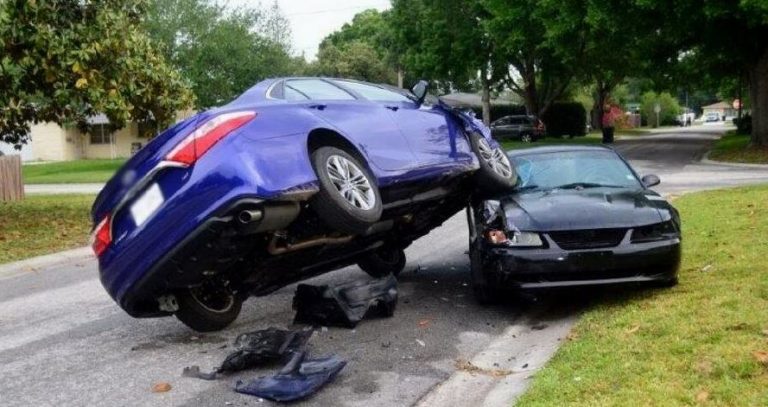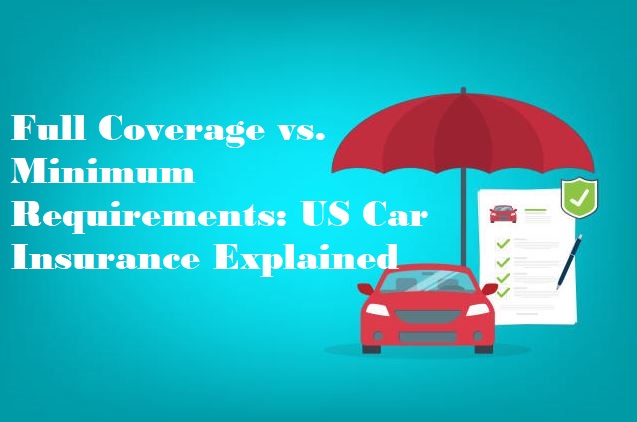Being involved in a car accident can be a stressful experience. On top of dealing with potential injuries and car damage, you also need to navigate the car insurance claim process. This guide will walk you through the steps of filing a car insurance claim in the US, from the immediate aftermath of an accident to receiving compensation for repairs or a totaled vehicle.

1. Stay Calm and Assess the Situation
Safety First: If there are injuries, call 911 immediately. Once the scene is safe, turn on your hazard lights and document the situation.
Gather Information: If everyone is okay, exchange contact information with all involved drivers, including names, phone numbers, and insurance companies. Take pictures of the damage to all vehicles involved, the surrounding area, and any visible injuries (with the injured party’s consent).
Report the Accident: Regardless of fault, contact your insurance company as soon as possible. They can guide you through the next steps and may offer roadside assistance or a tow truck.
2. Filing the Claim
There are several ways to initiate a claim with your insurance company:
- Phone: Calling your insurance company’s claims department is the most common way to file a claim. Be prepared to provide details about the accident, including the date, time, location, and a brief description of what happened.
- Online: Many insurance companies allow you to file a claim online through their website or mobile app. This can be a convenient option, especially if you have pictures of the damage readily available.
- Agent: If you have a local insurance agent, you can also contact them directly to file a claim.
Required Information: When filing your claim, be prepared to provide the following information:
- Your name and policy number
- Date, time, and location of the accident
- Details of the accident, including a brief description of what happened and the names and contact information of all drivers involved
- Police report number (if applicable)
- Pictures of the damage to your car and the scene of the accident
3. Working with the Insurance Adjuster
Your insurance company will assign an adjuster to handle your claim. The adjuster will:
- Investigate the Accident: They may contact you, the other driver(s) involved, and any witnesses to gather information about the accident.
- Assess the Damage: An adjuster will inspect your car to determine the extent of the damage. They may request to take their own pictures or send you to a body shop for an estimate.
- Determine Fault: Based on the evidence, the adjuster will determine who is at fault for the accident. This will affect which insurance policy covers the damages.
Be Prepared: During the adjuster’s investigation, be truthful and stick to the facts of the accident. Don’t speculate or admit fault. If you have any questions or concerns, don’t hesitate to ask your adjuster.
4. Repairing Your Car
There are typically two options for repairing your car:
- Approved Repair Shop: Many insurance companies have a network of approved repair shops. These shops work directly with the insurance company to handle repairs and billing.
- Your Choice of Shop: You can choose any qualified repair shop to fix your car. However, you will likely be responsible for paying upfront and then seeking reimbursement from your insurance company.
Deductible: You will be responsible for paying your deductible before your insurance coverage kicks in. The deductible amount is specified in your policy.
Total Loss: If the damage to your car exceeds a certain percentage of its value (usually around 70%), your insurance company will likely declare it a total loss. They will pay you the car’s actual cash value (ACV) minus your deductible.
5. Settlement and Follow-Up
Once your car is repaired or your claim is settled for a total loss, you will receive payment from your insurance company.
Review the Settlement: Carefully review the settlement offer to ensure it covers the cost of repairs or the ACV of your car. If you disagree with the offer, you can negotiate with your adjuster.
Maintain Records: Keep all paperwork related to your claim, including police reports, repair estimates, and communication with your insurance company.
FAQs on Filing a Car Insurance Claim
Here are some frequently asked questions about filing a car insurance claim:
1. What should I do if the other driver doesn’t have insurance?
If the other driver doesn’t have insurance, you might be able to file a claim under your own uninsured motorist (UM) coverage, if you have it. UM coverage helps pay for your repairs or injuries if the at-fault driver is uninsured or underinsured.
2. Should I get a lawyer involved?
In most cases involving minor accidents and straightforward claims, a lawyer isn’t necessary. However, if you have sustained significant injuries, your car is totaled, or the fault is disputed, consulting with a lawyer specializing in car accidents can be beneficial. They can help you navigate the legal complexities, negotiate with the insurance company, and ensure you receive fair compensation.
3. How long does it take to settle a car insurance claim?
The timeframe for settling a car insurance claim can vary depending on the severity of the accident, the extent of the damage, and the complexity of the investigation. Minor claims with clear fault assignment can be settled within a few weeks. More complex claims involving injuries, multiple parties, or disputes can take several months.
4. Will filing a claim raise my insurance rates?
Unfortunately, filing a claim can potentially increase your insurance rates at renewal time. However, the severity of the accident, who was at fault, and your overall claims history will all be considered by your insurance company when determining your rates.
5. What can I do to avoid my rates going up after a claim?
There’s no guaranteed way to prevent your rates from increasing after a claim. However, maintaining a clean driving record, taking advantage of discounts offered by your insurance company (such as multi-car or accident-free discounts), and shopping around for quotes before your policy renews can help minimize the impact on your premiums.
Additional Tips for Filing a Car Insurance Claim:
- Be Honest and Cooperative: Throughout the claim process, be honest and cooperative with your insurance company. Providing false information can jeopardize your claim.
- Document Everything: Keep detailed records of all communication with your insurance company, including phone calls, emails, and adjuster visits.
- Understand Your Coverage: Before filing a claim, take some time to familiarize yourself with your car insurance policy and understand what types of damages are covered.
- Don’t Settle Too Quickly: Don’t feel pressured to accept the first settlement offer from your insurance company. Take your time, review the details, and negotiate if necessary.
- Seek Professional Help When Needed: If you have any questions or concerns throughout the claim process, don’t hesitate to seek help from a lawyer or a trusted insurance professional.
By following these steps and keeping these tips in mind, you can navigate the car insurance claim process more smoothly and ensure you receive fair compensation for your car accident.pen_spark






